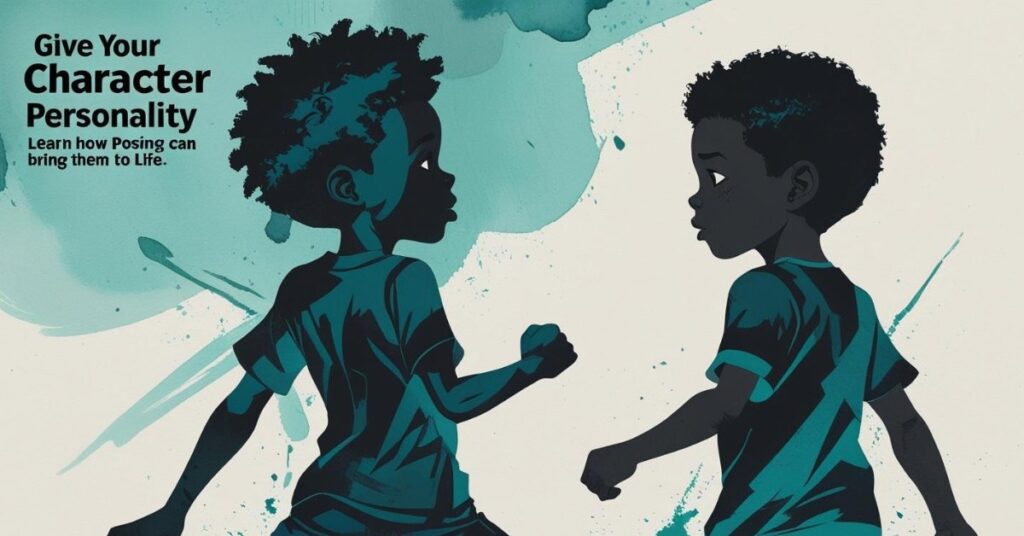Why Pose Matters More Than Detail
Before you draw the perfect eye or costume, your character’s pose already says something. A pose is a statement—it tells us how a character feels, who they are, and even what they might do next. And the best part? You don’t need to be a master artist to use this to your advantage.
Even a simple stick figure can convey confidence, shyness, anger, or joy. It’s all about body language. Learning to harness pose is one of the fastest ways to bring life to your characters.
Think in Silhouettes
One of the most powerful ways to test a pose is to check the silhouette. That means: black out the character’s shape entirely. If the action or emotion is still clear with no details, you’ve got a strong pose.
This is a trick used constantly in animation and comics. It’s not just about style—it’s about clarity. If a viewer can understand your character’s attitude from just the outline, they’re instantly engaged.
Pose = Personality
Let’s break down a few classic examples:
- Confident: One hand on the hip, chest out, head tilted slightly up.
- Shy: Slumped shoulders, arms close to body, head tilted down.
- Angry: Tensed shoulders, clenched fists, wide stance, leaning forward.
- Joyful: Arms open, chest forward, head back, movement in the legs.
You can practice these poses using simple stick figures or shape-based characters. Try sketching out a few quick thumbnails of each type. You’ll be surprised how much emotion you can get from just a few lines.

The Boondocks: A Masterclass in Expressive Posing
If you’ve ever watched *The Boondocks*, you’ve seen pose-driven personality in action. This series blends anime-inspired action with cartoon exaggeration, and it doesn’t shy away from stylized character performance.
Each character in *The Boondocks* has a distinct physical language. Huey stands centered, calm, often with arms folded—reflecting his introspective, disciplined nature. Riley slouches, leans, or points with oversized gestures—showcasing his energy and rebellious streak.
You don’t need to know every line of dialogue to understand who they are. Their poses say it all.

Practice Prompt: One Personality, Three Poses
Here’s an exercise you can try right now:
- Pick a character personality—curious, grumpy, sneaky, etc.
- Sketch that character in three different poses that reflect that same personality. Try showing different emotions or situations (like relaxed, alert, or interacting with someone else).
- Use silhouette checks to refine each pose.
This helps you stretch your design thinking while reinforcing consistency in your characters.
Final Thought
A good pose doesn’t just support a drawing—it carries it. If your character feels flat or forgettable, try adjusting their posture before adding more detail. Personality is posture, and posing is power.


























